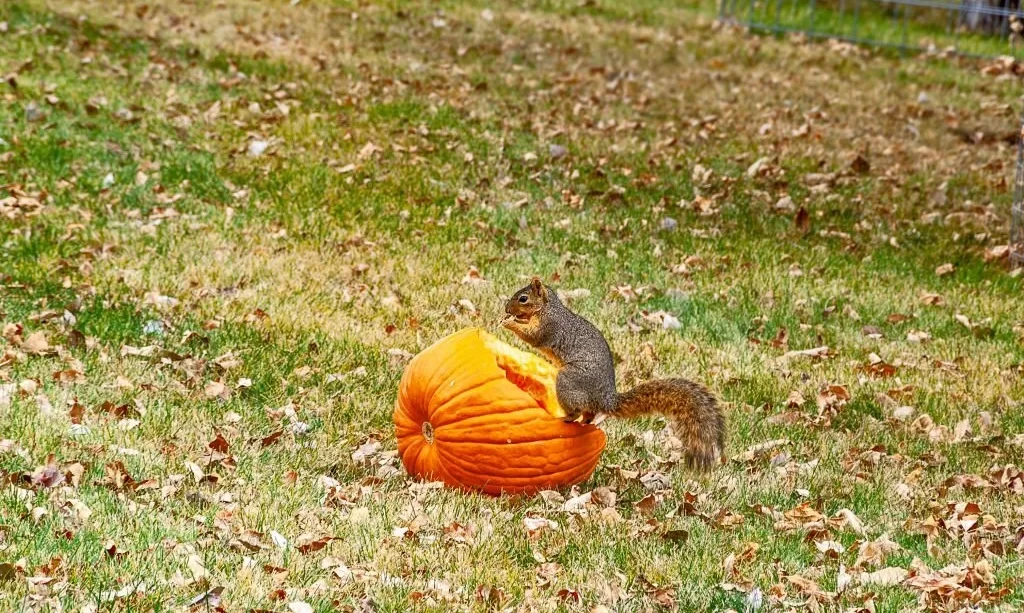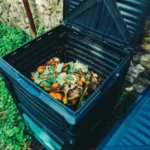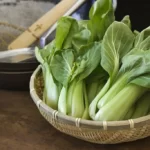Squirrels, with their bushy tails and nimble movements, are a common sight in many parts of the world. These small, agile rodents have adapted to various environments, including urban settings, and have evolved a diverse diet to suit their survival needs. As curious observers of nature, many of us wonder what exactly these furry critters eat and whether it’s safe to feed them certain human foods. One particular question that often arises is, “Can squirrels eat pumpkin seeds?”.
In this article, we’ll explore the dietary habits of squirrels, examine the nutritional value of pumpkin seeds, and determine whether offering these seeds to squirrels is a safe and beneficial practice. Squirrels are fascinating creatures, and understanding their dietary preferences can help us appreciate and coexist with them in a more informed manner.
The Squirrel Diet
Before we delve into the specific question of pumpkin seeds, it’s essential to understand the broader dietary habits of squirrels. Squirrels are omnivores, which means they have a varied diet that can include both plant and animal matter. Their primary source of sustenance, however, consists of plant-based foods.
In the wild, squirrels have the ability to adapt their diet according to seasonal availability and regional food sources. They are known to consume a wide range of nuts, seeds, fruits, and even the bark of trees. Tree squirrels, like gray squirrels and red squirrels, often rely on acorns, hickory nuts, and other tree nuts as a staple food source. Ground squirrels, on the other hand, may consume seeds, grains, and even small insects when they can find them.
Squirrels’ diets are not only influenced by their surroundings but are also influenced by the time of year. During the spring and summer, they may focus more on fruits, berries, and tender vegetation, while in the fall and winter, they shift their attention to nuts and seeds, which are stored for future consumption.
- Premium Pumpkin Seed
Pumpkin Seeds: Nutritional Value
Now that we have a better understanding of the general squirrel diet, let’s take a closer look at the nutritional value of pumpkin seeds. Pumpkin seeds, also known as pepitas, are a popular snack for humans and are often used in various culinary dishes. These small, flat, green seeds are not only delicious but also packed with essential nutrients.
Pumpkin seeds are a rich source of protein, which is vital for the growth and maintenance of tissues in both humans and animals. They also contain healthy fats, particularly monounsaturated and polyunsaturated fats, which provide a source of long-lasting energy. Additionally, pumpkin seeds are high in dietary fiber, which aids in digestion and helps regulate blood sugar levels.
These seeds are a good source of various vitamins and minerals, including zinc, magnesium, potassium, and iron. Zinc is crucial for immune function, while magnesium plays a role in muscle and nerve function. Potassium helps maintain proper electrolyte balance, and iron is important for oxygen transport within the body. Furthermore, pumpkin seeds are known to contain antioxidants that can help combat oxidative stress and inflammation in the body.
Understanding the nutritional value of pumpkin seeds is essential when considering whether they can be a part of a squirrel’s diet. In the next section, we will explore the safety and benefits of feeding pumpkin seeds to these furry foragers.
Pumpkin Seeds: Safe for Squirrels?
As we ponder whether squirrels can eat pumpkin seeds, it’s important to address safety concerns. While pumpkin seeds are undoubtedly nutritious for humans, the same may not be true for our bushy-tailed friends. One primary concern is the hard outer shell of pumpkin seeds. Squirrels are equipped with strong jaws, but their teeth are not designed for cracking tough shells. In fact, attempting to do so may result in dental damage.
The shells of pumpkin seeds can be challenging for squirrels to open, which may pose a risk to their teeth. Chipped or broken teeth can lead to dental problems that can affect a squirrel’s overall health. Additionally, the sharp edges of cracked seeds might injure their mouth or throat. It’s crucial to consider these potential hazards when offering pumpkin seeds to squirrels.
Another aspect to keep in mind is moderation. While pumpkin seeds can provide beneficial nutrients, they should be just a small part of a squirrel’s diet. Overfeeding these seeds can lead to nutritional imbalances or an excessive intake of fat, which may not be ideal for squirrels in the long run.
Preparing Pumpkin Seeds for Squirrels
If you decide to offer pumpkin seeds to squirrels, there are ways to make them safer and more accessible for these little creatures. To ensure their safety and enjoyment, consider the following steps when preparing pumpkin seeds:
- Remove the Shells: The most important step is to remove the hard outer shells. You can do this by cracking the seeds open and providing the inner kernels. This eliminates the risk of dental damage or injury associated with the tough shells.
- Roast the Seeds: While squirrels can consume raw pumpkin seeds, roasting them can enhance their flavor and make them more appealing. Roasting can also help break down any potential enzyme inhibitors that might be present in raw seeds.
- Control Portion Sizes: Be mindful of the amount of pumpkin seeds you offer to squirrels. Limit their intake to a small handful at a time. This allows them to enjoy the nutritional benefits without overindulging.
- Freshness Matters: Like any food, the freshness of pumpkin seeds is important. Store them in an airtight container to maintain their quality and prevent them from becoming rancid.
Remember that while pumpkin seeds can be a nutritious and tasty treat for squirrels when prepared and offered correctly, they should be a supplemental part of their diet. Squirrels have a varied and adaptable diet in the wild, so it’s essential to provide a balanced array of foods to ensure their overall well-being. In the next section, we will discuss the best practices for introducing pumpkin seeds into a squirrel’s diet.
Feeding Pumpkin Seeds to Squirrels
Feeding pumpkin seeds to squirrels can be a rewarding and enjoyable activity, but it should be done with care. Here are some best practices for introducing pumpkin seeds into a squirrel’s diet:
- Gradual Introduction: If you plan to feed squirrels pumpkin seeds, start by offering them a small quantity. This allows the squirrels to become accustomed to this new food source and helps you gauge their interest.
- Observe Their Response: Watch how the squirrels react to the pumpkin seeds. Some individuals may readily accept them, while others might be more cautious. Squirrels are known for their inquisitive nature, so don’t be surprised if they investigate the new treat.
- Maintain a Balanced Diet: Remember that pumpkin seeds should only be a part of a squirrel’s diet, not the entirety. Continue providing a variety of foods, including nuts, fruits, and vegetables, to ensure they receive the necessary nutrients.
- Place Seeds Strategically: Offer the seeds in locations where squirrels frequently visit. You can use squirrel feeders or simply scatter the seeds on a flat surface or on the ground. Providing easy access will make it more likely for the squirrels to enjoy the seeds.
- Regular Cleanup: If you feed squirrels, it’s important to clean up any uneaten seeds or shells regularly. This prevents attracting unwanted pests or rodents to your property.
By following these guidelines, you can safely incorporate pumpkin seeds into a squirrel’s diet, providing them with an occasional treat while maintaining their overall nutritional balance.
Observing Squirrels Enjoying Pumpkin Seeds
Observing squirrels as they enjoy pumpkin seeds can be a delightful and educational experience. These little acrobats are known for their entertaining antics and playful behavior. When you provide pumpkin seeds, keep an eye out for the following behaviors:
- Gathering and Storing: Squirrels are natural hoarders. You may witness them collecting pumpkin seeds and carefully storing them in various hiding spots, which they will return to during leaner times.
- Cracking the Seeds: Some squirrels might attempt to crack open the seeds, but this can be a challenging task for them. Others may opt to consume the inner kernels without the shells.
- Social Interactions: Squirrels are not solitary animals and often engage in social interactions. You may observe them sharing or competing for the seeds with fellow squirrels.
- Acrobatics: Squirrels are renowned for their agility and acrobatics. They might climb trees or leap from branch to branch while holding onto their prized pumpkin seeds.
- Expressing Gratitude: While squirrels can’t actually thank you, they may indirectly express their appreciation by frequenting your feeding spot more often.
Conclusion
In conclusion, can squirrels eat pumpkin seeds? Yes, they can, but with a few important considerations. Pumpkin seeds, when properly prepared and served in moderation, can be a nutritious and enjoyable addition to a squirrel’s diet. They offer valuable nutrients and a tasty treat that many squirrels appreciate.
However, safety should be a top priority. Remove the hard shells, roast the seeds, and ensure that they are just one part of a diverse diet for squirrels. Remember that these charming creatures have unique dietary needs and preferences, so providing a well-rounded menu will keep them healthy and happy.
Observing squirrels as they savor pumpkin seeds can be a heartwarming experience that connects us with the natural world around us. By following best practices for feeding and appreciating these resilient animals, we can coexist with them in a way that benefits both humans and squirrels alike.





